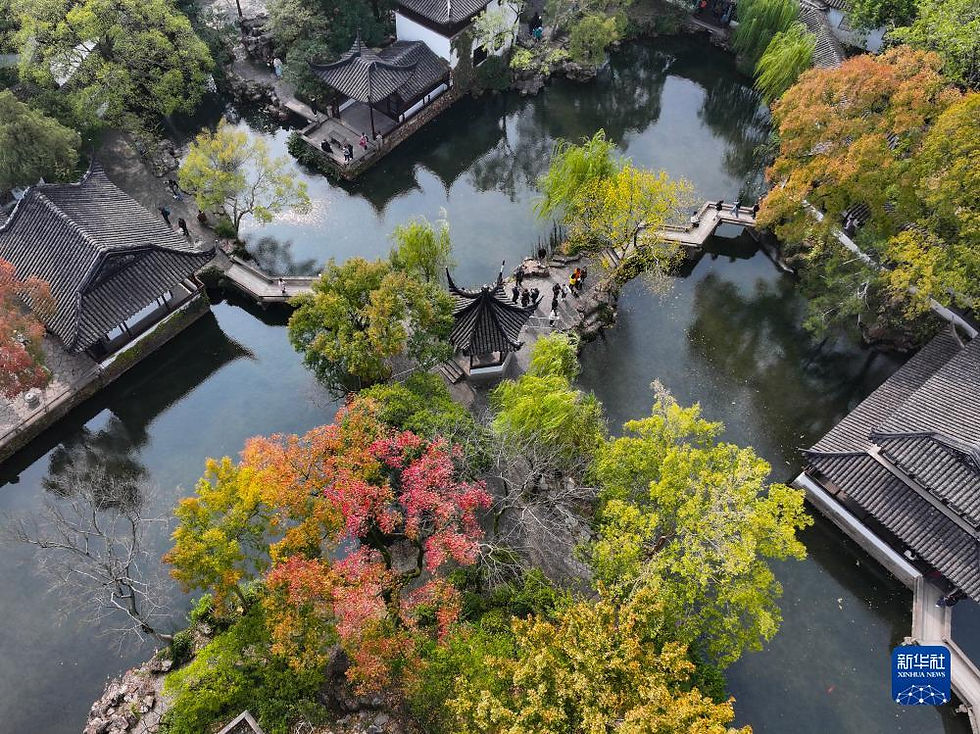Suzhou Gardens
- Zhongrui Yao
- Feb 10
- 2 min read
Updated: Feb 27
Suzhou Garden is an outstanding representative of traditional Chinese garden art. It is located in Suzhou City, Jiangsu Province. It is world-renowned for its exquisite design, rich cultural heritage and unique garden art. Suzhou Garden is known as the "Mother of Oriental Gardens" and is also one of the four famous gardens in China. The following are the main characteristics and representative gardens of Suzhou Garden:
Features of Suzhou Garden
1. Compact layout: Pay attention to the rational use of space and create infinite artistic conception within a limited area.
2. Combination of nature and humanity: Integrating landscapes, plants and architecture into one, it embodies the artistic effect of "although it is made by man, it seems to be created by nature".
3. Exquisite details: small bridges, flowing water, pavilions, rockery and strange stones are all carefully designed, showing the beauty of meticulous craftsmanship.
4. Poetic and picturesque: Each landscape has a unique meaning and is full of cultural atmosphere. Many inscriptions and couplets in the gardens contain profound philosophy.
Famous Suzhou Gardens
Written by Joseph Zhang
1. Humble Administrator's Garden
It is the largest garden in Suzhou Garden and the most famous. It is dominated by natural landscapes, with a sparse layout and the characteristics of Jiangnan Water Village.
Known as the "Mother of Chinese Gardens".
2. Lingering Garden
Famous for its exquisite stone scenery, compact yet spacious layout, cleverly utilizing the guidance of sight and the extension of space.
It is a representative of Jiangnan classical gardens
3. Master of the Nets Garden
It is small in area, but exquisitely designed, fully reflecting the artistic effect of "seeing the big in the small".
It is especially suitable for appreciating the lighting effects in the garden at night.
4. Huanxiu Villa
Famous for its rockery art, the rockery layout is natural, and it can be regarded as a model of Chinese garden rockery art.
5. Canglang Pavilion
One of the oldest gardens in Suzhou, it is known for its naturalness and simplicity, reflecting the style of Song Dynasty gardens.





Comentarios